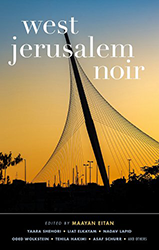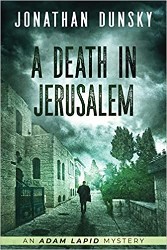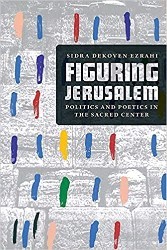This is part of a combined review for West Jerusalem Noir.
These two varied collections of stories, published simultaneously, are set in a kaleidoscopic Jerusalem that is impossible to describe with a single voice. Both volumes attempt to render one of the world’s oldest, bloodiest, holiest, and most divided cities. That division is apparent in the physical separation of these two editions of Akashic Books’s Noir series.
The Palestinian stories in East Jerusalem Noir are far more thematically linked than those in West Jerusalem Noir. In “The Ceiling of the City” by Nuzha Abu Gosh, a man no longer feels at peace in his home city after he is detained for failing to present his identification card to an Israeli guard. The protagonists of other stories are stopped at military checkpoints, places of worship, and at the many gates into the Old City that at times feels very far away. In Mahmoud Shukair’s “City of Love and Loss,” a reimagining of the ancient Arab love story Layla and Majnun, a man living outside Jerusalem’s walls falls in love with a woman within them. Divisions of class, along with the physical wall itself, force the higher-class Palestinian woman to choose between her family and her heart. When she goes on a hunger strike — mirroring the protests of her ancestors, who were driven out of the area around Jerusalem in 1948 — the intersection of the personal and the political becomes clear. In many of these stories, injury, disappearance, separation, and subjugation put extreme pressure on characters’ romantic and filial relationships. The authors demonstrate how the conflict affects unique individuals who must search deep in Jerusalem (and beyond) to find hope.
The stories in West Jerusalem Noir vary widely in scope. The tone-setter is Yiftach Ashkenazi’s “A Great Bunch of Guys,” in which an IDF combat assigner realizes too late that the power instilled in him by the army is not the same as the freedom to do what he thinks is right. Other stories, like Asaf Schurr’s “Chrysanthemums,” are the sibling anthologies’ closest tributes to the conventional contemporary noir genre, involving tropes like murder, arson, detectives, cover-ups, and corruption. Often, the stories that fit the parameters of this genre are the least unique to Jerusalem itself; unlike the East edition, some of the stories in West use Israel’s capital and the region’s strife as a backdrop rather than a foreground. Yet Yardenne Greenspan’s “Top of the Stairs” is able to merge the imagery of conflict — a Jewish soldier’s memories from World War II, when he served with the British military — with a compelling character who has too many unanswered questions in his past to fully accept the present.
It might be said that any story set in a city so steeped in violent history, so scrawled with religious myth, and so floodlit by divisive order is a story about searching, about darkness, and about moral qualms — is, in other words, a noir.
Nathan Blum is an MFA Candidate in Fiction at Vanderbilt University and editor-in-chief at Nashville Review. His writing appears or is forthcoming in Westchester Review, Cagibi, and Ploughshares.




